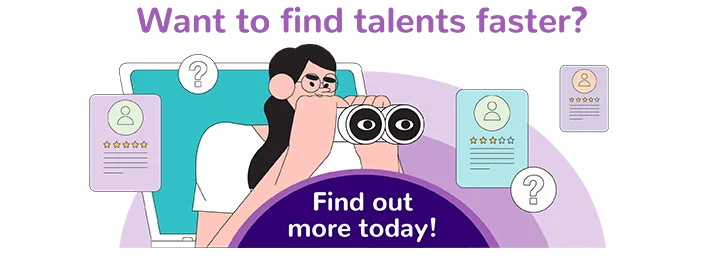Adaptability has become a mission-critical skill in today’s workplace. According to a 2023 report by the World Economic Forum, 50% of all employees will need reskilling by 2025 due to rapid technological advancements and shifting job roles.
One of the most effective ways to address this challenge is through cross-skilling. By equipping team members with a diverse skill set, businesses can enhance problem-solving capabilities, empower individual career growth, and build more agile teams. Leaders prioritising cross-skilling foster a culture of growth and innovation, ensuring their teams remain resilient in the face of change.
In an era of evolving workforce demands and unexpected disruptions, cross-skilling isn’t just a strategy—it’s a necessity for modern leadership.
What is cross-skilling?
Cross-skilling equips your team members with complementary skills beyond their primary role. Unlike upskilling (advancing expertise in a specific role) or reskilling (preparing someone for an entirely new position), cross-skilling enables employees to perform tasks across various functions. For example, a marketing associate gaining basic data analytics skills or a junior developer mastering project management principles.
For team leaders, cross-skilling isn’t just about diversifying team capabilities—it’s about futureproofing your workforce. The question is no longer “Why cross-skill?” but “How soon can we start?”
Why cross-skilling should be your priority
1. Increased team agility and flexibility
When priorities change suddenly, teams with flexible skills can handle the challenge.
For example, if a team member goes on extended leave, a cross-trained colleague can step in and keep things on track.
A team with diverse professional skills adapts quickly, manages shifting demands, and uses resources more effectively, hence keeping everything running smoothly.
2. Enhanced problem-solving and innovation
Having a mix of skills boosts creativity and innovation. A team with different but overlapping abilities can tackle problems from different perspectives, leading to better solutions.
For example, a product design team with members who know basic coding can work more smoothly with engineers to create exciting new features.
3. Improved employee engagement and morale
Cross-skilling helps both your team and your employees. People don’t stay motivated by doing the same thing every day. Giving them the chance to learn new skills keeps them engaged, challenged, and invested in their work.
For example, a marketing assistant who learns to use AI tools or manage budgets can feel more empowered, trusted, and motivated.
4. Reduced risk and increased business continuity
Cross-skilled teams create a more resilient and efficient workplace. By sharing critical tasks among multiple people, you ensure continuity, adaptability, and a smoothly running business, even during unexpected changes.
5. Better career growth opportunities for team members
Cross-skilling can boost your career. Learning new, transferable skills makes you more valuable, opens up more career options, and increases your chances of promotion.
For example, a content writer who learns SEO and branding becomes more essential to their team, takes on bigger responsibilities, and grows personally and financially.
Practical steps to build cross-skilled teams
Cross-skilling is worthwhile, but how do you begin? Here’s a roadmap for team leaders to implement it successfully.
Step 1: Conduct a skills gap analysis
Before embarking on a cross-skilling initiative, it’s crucial to understand where your team currently stands. Here’s how to assess their skills effectively:
1. Conduct a skills inventory
Start by cataloguing the skills of each team member. You can use self-assessments, one-on-one discussions, or performance reviews to gather this information.
2. Identify critical skills for the future
What’s on the horizon for your industry growth? Analyse emerging trends and technologies, and create a list of skills your team will need to stay competitive.
For example, if you lead a marketing team, digital skills such as data analytics and AI tools may become essential. For a customer service team, it’s likely to be soft skills like empathy combined with technical tools.
3. Prioritise skill development
Pinpoint the areas where your team has the most significant skill gaps and align these with your organisation’s goals. This will help you focus your efforts on skill-building initiatives that have maximum impact.
Step 2: Develop a cross-skilling strategy
Every successful initiative begins with a well-structured plan. These steps will help guide your cross-skilling strategy:
1. Set objectives and timelines
Define clear goals for your cross-skilling programme. For instance, your objective might be to have 30% of team members proficient in a specific software within six months.
2. Secure resources
Develop a budget for your initiative. This might involve allocating funds for training, external certifications, or task-specific tools.
3. Identify training opportunities
Look both internally and externally for resources. Internal training, such as mentoring or shadowing, is cost-effective and promotes collaboration. External options, such as online courses or workshops, can bring specialised expertise. Tip: platforms like Coursera or LinkedIn Learning provide tailored courses across a variety of subjects.
Step 3: Implementing cross-skilling strategies
Once your plan is in place, execution becomes the next step. Consider incorporating the following tactics into your approach:
1. Mentorship and coaching
Leverage the skills of your existing team members by pairing seasoned employees with those eager to learn. This not only builds skills but also nurtures work relationships and trust.
2. Job rotation
Encourage employees to switch roles or work on cross-functional projects temporarily. This hands-on experience accelerates learning. For example, an HR specialist might work with the marketing department to develop campaigns for internal initiatives.
3. Self-directed learning
Empower employees to take charge of their own development by giving them access to learning tools and resources. Reward and acknowledge their initiative to reinforce this behaviour.
Step 4: Fostering a growth mindset
Leaders must create an environment where learning is celebrated, not sidelined. They must encourage a growth mindset and reward employees’ efforts to step out of their comfort zones.
- Be proactive with feedback to support skill development.
- Publicly recognise and celebrate individuals who successfully apply new skills.
Step 5: Address resistance and measure success
1. Key performance indicators (KPIs)
For instance, track improvements in team productivity, employee engagement scores, or the reduction of external hiring needs.
2. Employee feedback
Request honest input from team members through surveys or interviews. Ask specific questions such as did the training feel relevant? do they feel more confident in their roles?
3. ROI analysis
Quantify the return on investment by comparing the programme’s cost to the measurable benefits, such as fewer bottlenecks, increased upskilling internally, or reduced employee turnover.
Overcoming challenges
Implementing cross-skilling isn’t without its hurdles. Employees might worry about added responsibilities or feel stretched thin. To counter this:
- Reassure them that cross-skilling empowers rather than burdens them.
- Provide the necessary tools and time to balance learning with existing work.
A common challenge for leaders is proving the value of cross-skilling to stakeholders. To demonstrate its profound impact, use measurable data such as lowered attrition, faster project completion, or heightened customer satisfaction.
The long-term rewards of cross-skilling
Cross-skilling isn’t just a quick fix; it’s a transformative strategy. You’re not just building a more capable and resilient team—you’re instilling a sense of purpose and belonging in your employees. This is the key to driving engagement, innovation, and long-term success.
Take the lead and start building a more resilient, adaptable, and engaged workforce today. By investing in your team’s skills, you’re not just preparing for the challenges of tomorrow—you’re empowering your team to thrive while achieving excellence.
















